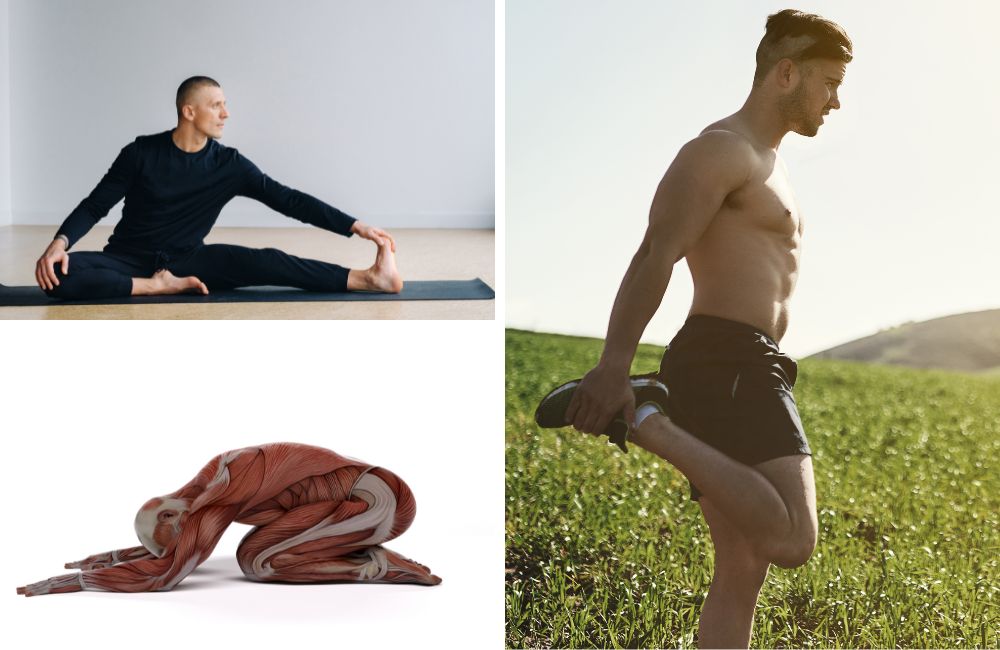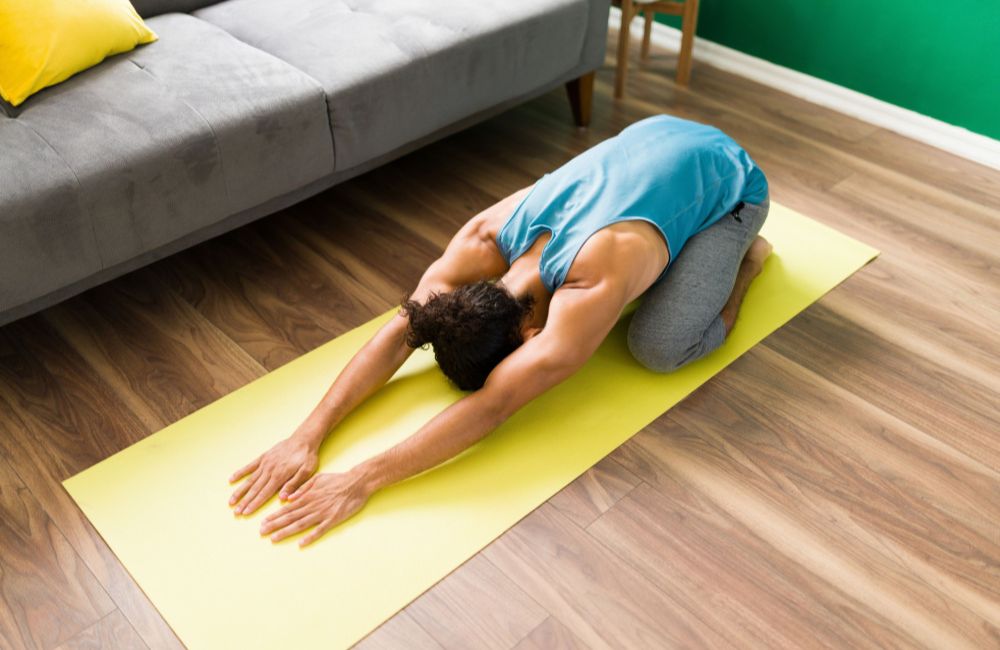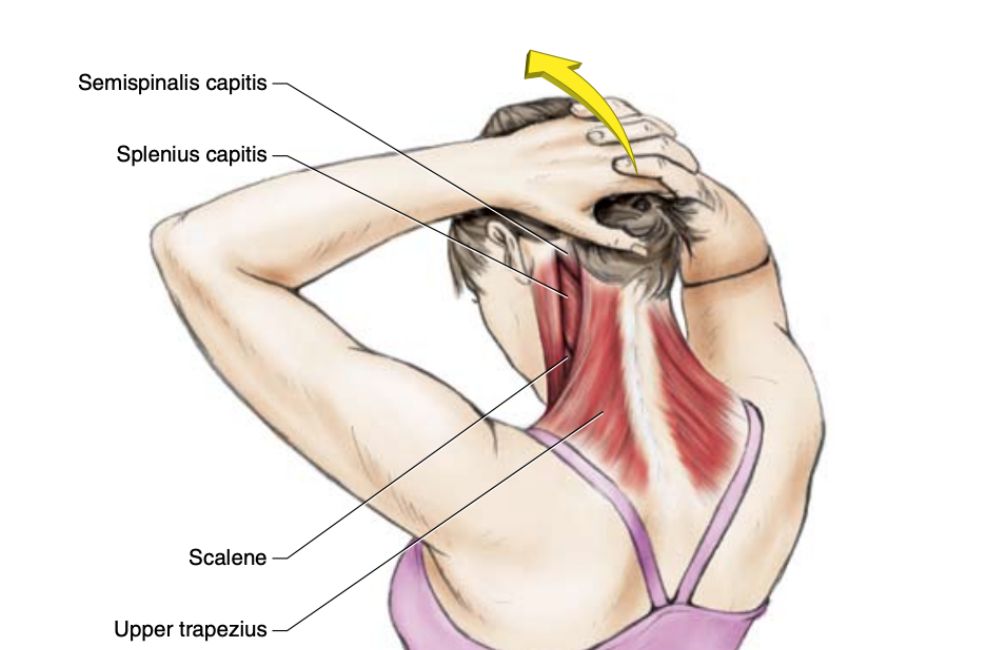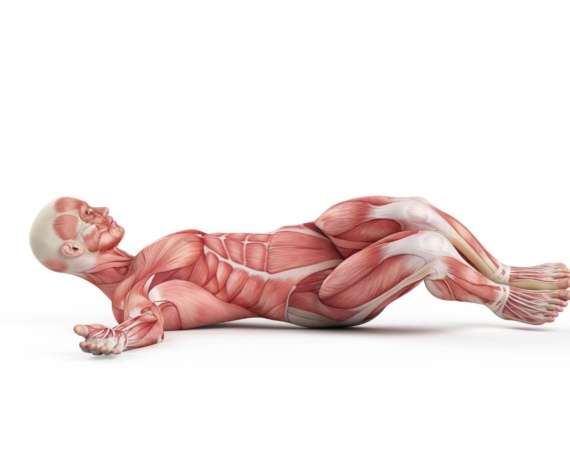
As men pass 40, it’s common to experience more aches, pains, and muscle tightness.
Years of activity, injuries, and the natural effects of aging can make joints stiffer and reduce flexibility. Luckily, incorporating regular stretching and mobility exercises into your routine can help improve your range of motion, alleviate discomfort, and restore fluidity to movements.
This article will provide five effective flexibility exercises that target areas where men over 40 commonly experience tightness and discomfort.
These simple stretches can be done daily to stretch away aches and keep you moving with ease. We’ll also share tips on stretching safely and making flexibility training a lifelong habit.
Child’s Pose

Child’s pose is a resting yoga pose that gently lengthens the lower back, hips, thighs, and ankles – prime problem spots as we age.
How to:
- Begin on your hands and knees. Slowly sink hips back toward feet, extending arms forward and lowering chest between thighs to a comfortable stretch.
- Relax muscles and breathe deeply. Hold for 30-60 seconds.
- Repeat 2-3 times, easing deeper into the pose with each repetition. The child’s pose alleviates lower back tightness and creates space in the hips so you can move with less restriction.
Next up, a stretch for tight quads and knees…
Standing Quad Stretch
The front of the thighs, or quadriceps, tend to stiffen as we get older, contributing to knee discomfort. This standing stretch addresses tight quads.
How to:
- Stand tall, using the wall for balance if needed. Lift one foot behind you, bending the knee to grab the ankle. Gently pull the heel toward your glutes until you feel a mild-moderate quad stretch.
- Hold for 30 seconds, increasing intensity slightly over time.
- Complete 2-3 reps on each leg to relieve tension.
Now onto a twist to mobilize the spine…
Seated Twist
Rotating the spine elongates and decompresses the back to relieve pain and improve mobility.
How to:
- Sit tall with crossed legs. Place your right hand on your left knee and your left hand behind you for support. Inhale as you twist your torso to the left, turning your head to look over the left shoulder.
- Hold for 30 seconds, then repeat on the other side, completing 2-3 reps per side.
- Move only as far as is comfortable.
Next, a yoga staple to open the calves and hamstrings…
Downward Facing Dog
Downward-facing dog inverts the body to gently lengthen the hamstrings and calves.
How to:
- From hands and knees, tuck toes under and lift knees off the floor, pushing hips up and back to form an inverted V shape.
- Pedal legs bent and straight to fully stretch calves.
- Hold for 30 seconds, then gently release back to hands and knees.
- Repeat 2-3 times, allowing heels to move closer to the floor with each rep.
- Lastly, a forward bend for the hamstrings…
Standing Forward Bend
This move stretches the hamstrings and lower back in one fluid motion.
Stand with feet hip-width apart.
How to:
- Exhale as you hinge forward at the hips, reaching your hands toward the floor while letting your knees bend generously. Clasp your hands behind your legs and gently sway for a deeper stretch.
- Hold for 30 seconds. Repeat 2-3 times, straightening knees slightly more with each rep.
- Stick with these 5 stretches consistently, and you’ll be moving and feeling years younger in no time.
Just 10 minutes a day can dramatically improve flexibility and reduce achiness.
When stretching, it’s important to move slowly and gently. Never bounce, and stop if you feel any pain. It’s also important to stay hydrated before, during, and after stretching.
You can do these stretches daily to improve your flexibility and range of motion. If you have any health concerns, be sure to talk to your doctor before starting any new exercise program.
Here are some additional tips for stretching safely and effectively:
- Warm up before stretching by doing some light cardio or dynamic stretches.
- Hold each stretch for 30 seconds.
- Breathe deeply and relax into each stretch.
- Don’t bounce.
- Listen to your body and stop if you feel any pain.
Stretching is an important part of staying fit and healthy, especially as we get older. By incorporating regular stretching into your routine, you can improve your range of motion, reduce pain, and boost your overall well-being.


